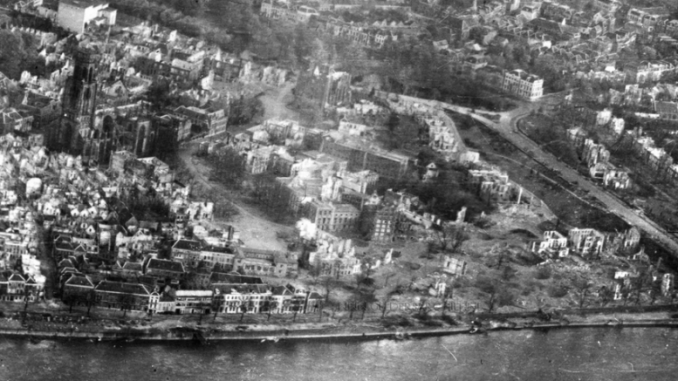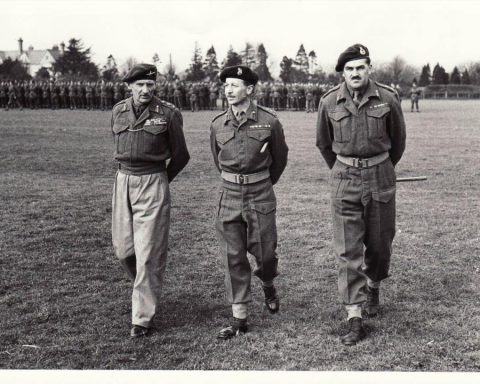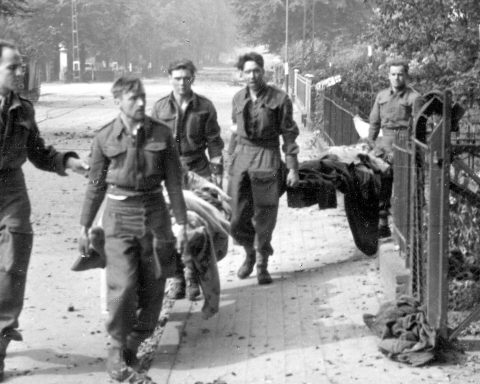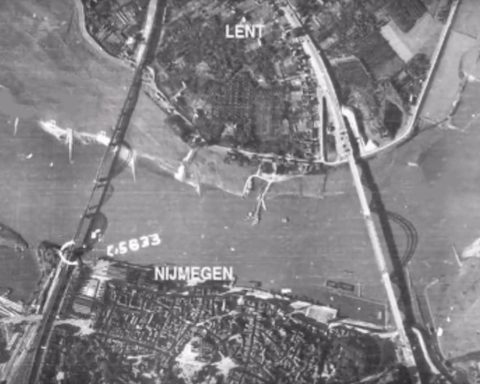After operation Market Garden had ended, the fighting in Arnhem was still not completely over. On October 7, 1944, the Rhine Bridge in Arnhem, which had been fought over so hard, was destroyed by bombing.
After the Battle of Arnhem was lost by the Allies at the end of September 1944, the British and American ground troops were stuck south of Arnhem on the Bemmel-Elst-Driel line.
Those soldiers faced increasingly strong resistance from the Germans, who used the bridge in Arnhem to send soldiers, artillery and tanks south. Other bank connections across the Rhine, such as the railway bridge at Oosterbeek, had already been destroyed by the Germans during the Battle of Arnhem.
The Rhine Bridge, where John Frost and his men had bravely resisted for days, was the only bridge across the Rhine still in use.
The Germans had sent parts of the 116th and 9th Panzer Division towards Nijmegen via the bridge in Arnhem in an attempt to recapture the Waal Bridge from the Americans.
To put an end to the build-up of German troops, the Allied army leadership decided to destroy the Rhine Bridge by bombing.
What played a role in this was the realization that the Allies would never succeed in gaining control of the Rhine Bridge intact. When the first Allied soldier came near the bridge, the Germans would immediately blow up the bridge.
First bombing
On Friday, October 6, around noon, the first Allied bombs fell around the Rhine Bridge.
The Allies had the advantage that Arnhem had been evacuated by the Germans. As a result, there were no civilian casualties during the bombing. But even if Arnhem had not been evacuated, the Allies would probably not have hesitated for a second to send bombers to Arnhem.
After the Normandy landings, the Allies also bombed French cities such as Caen and Le Havre. During the Second World War, Allied bombing raids on France killed almost 70,000 French civilians.
The bombing of Friday, October 6, which targeted the Arnhem Rhine Bridge, did not become a bloodbath due to the evacuation of Arnhem. But British reconnaissance planes flying over Arnhem after the bombing concluded that the bombing had largely failed.
Most of the bombs did not fall on the bridge, but on the city center of Arnhem. Although the Rhine Bridge was heavily damaged, it could still be used by the Germans.
German Pioneers had started repairing the bridge immediately after the bombing. Around midnight, one lane was again available for tanks and trucks.
Second bombing
Because the first bombing of the Rhine bridge had largely failed, the Allies sent a second group of bombers to Arnhem on Saturday, October 7, for an air attack on the Arnhem bridge.
Seven twin-engine Martin Marauders bombers with heavier bombs appeared over Arnhem around noon to finish the job that had failed the day before. This time it was a hit.
As a result of several direct hits, the bridge was shattered into pieces and largely disappeared under water.
Afterwards it turned out that the greatest damage to the bridge was most likely caused by the fact that the explosive charge that the Germans had placed on the bridge also exploded as a result of one of the bombs.
But this time too, not all bombs landed on and around the Rhine Bridge. The city center, which had already suffered heavy damage in the bombing the day before, was also badly hit by the second bombing.
Eusebius church
As can be seen in the photo at the top of this article, the tower of the Eusebius church still stood proudly after the bombings. The church itself was virtually destroyed due to bombs and fire, but the tower still seemed intact.
However, the tower was more damaged than it seemed. During the fighting in September, both the British and Germans had already fired on the church tower. Soldiers from both sides suspected that the tower was used as an observation point.
As a result of the shelling, the church burned down completely in the night of September 19 to 20.
The tower of the Eusebius Church also suffered heavy blows during the bombings of October 6 and 7. All surrounding buildings on Turfstraat and Broerenstraat were wiped out by the bombing.
The final blow to the Eusebius tower came in January 1945. To ensure that the Allies would not use the remains of the destroyed Rhine Bridge to advance across the Rhine, the destroyed bridge was blown up again by the Germans.
The pressure wave from that explosion was too much for the heavily damaged Eusebius Tower, which collapsed with a thunderous noise.






